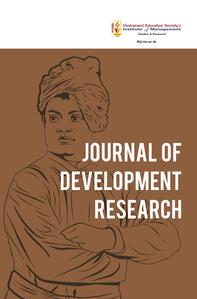
1 Department of Commerce, Assam University Diphu Campus, Diphu, Assam, India
2 Department of Commerce, Golaghat Commerce College, Golaghat, Assam, India
Creative Commons Non Commercial CC BY-NC: This article is distributed under the terms of the Creative Commons Attribution-NonCommercial 4.0 License (http://www.creativecommons.org/licenses/by-nc/4.0/) which permits non-Commercial use, reproduction and distribution of the work without further permission provided the original work is attributed.
In the modern era, overseeing employees within a company has evolved beyond traditional methods. With business expansion and technological advancements, managing employees and monitoring their performance can now be done online using human resource (HR) analytics tools. The utilisation of HR analytics leads to enhanced employee performance and improved business efficiency, including more effective recruitment, talent management, employee performance and decreased employee turnover. The assessment of different functions and the insights into employee performance provided by HR analytics are crucial for improving decision-making and giving the organisation a competitive advantage. This research seeks to investigate how HR analytics tools are used and highlight the benefits they provide to employees. Organisations can leverage existing data to address issues such as performance, employee turnover and employee attitudes using analytics tools. The motivation behind this research is the shortage of human resources in many organisations. Despite the challenges faced by human resources, the technological landscape has given rise to numerous analytical tools that are being adopted by large companies. The findings of the study underscore the pivotal role played by HR analytics in shaping office behaviour and the work environment.
HR analytics, analytics tools, employees, private bank
Adeyanju, O. D. (2012). An assessment of the impact of corporate social responsibility on Nigerian society: The examples of banking and communication industries. Universal Journal of Marketing and Business Research, 1(1), 17–43.
Anita, R., & Sumathi, N. (2019). A study on the measuring the factors of HR analytics on performances management in services sector of selected companies in Chennai. JAC: A Journal of Composition Theory, 12(12).
Armstrong, J. S., & Overton, T. S. (1977). Estimating nonresponse bias in mail surveys. Journal of Marketing Research, 14(3), 396–402. https://doi.org/10.2307/3150783
Babynina, L. (2021). Transformation of approaches to human resources management in the new reality [Conference session]. Proceedings of Global Challenges and Prospects of the Modern Economic Development (GCPMED 2020), 15–16 December 2020, Samara State University of Economics, Samara, Russia.
Di Claudio, M. (2019). People analytics and the rise of HR: How data, analytics and emerging technology can transform human resources (HR) into a profit center. Strategic HR Review, 18(2), 42–46.
George, L., & Kamalanabhan, T. J. (2016). A study on the acceptance of HR analytics in organisations. International Journal of Innovative Research and Development, 5(2).
Guthrie, J. T., Coddington, C. S., & Wigfield, A. (2009). Profiles of motivation for reading among African American and Caucasian students. Journal of Literacy Research, 41, 317–353. https://doi.org/10.1080/10862960903129196
McCartney, S., & Fu, N. (2022). Bridging the gap: Why, how and when HR analytics can impact organizational performance. Management Decision, 60(13), 25–47. https://doi.org/10.1108/MD-12-2020-1581
Momin, M. W., & Taruna. (2015). HR analytics transforming human resource management. IJAR, 1(9), 688–692.
Muhammad, S., Khan, I., & Hameed, F. (2022). The impact of performance management system on employees performance. International Journal of Business and Management Sciences, 2(3), 38–47.
Novo Melo, P., & Machado, C. (2021). The role of HR analytics for digital HRM transformation [Conference session]. INTED2021 Proceedings: 15th International Technology, Education and Development Conference, 8–9 March 2021.
Opatha, H. H. D. P. J. (2020). HR analytics: A literature review and new conceptual model. International Journal of Scientific and Research Publications, 10(6).
Poba-Nzaou, P., Galani, M., & Tchibozo, A. (2020). Transforming human resources management in the age of Industry 4.0: A matter of survival for HR professionals. Strategic HR Review, 19(6), 273–278.
Reddy, R. P., & Keerthi, P. L. (2017). HR analytics’ - An effective evidence based HRM tool. International Journal of Business and Management Invention, 6(7), 23–34.
Thakre, N. (2020). Human resource (HR) analytics for organizational transformation and effectiveness. Training & Development Journal, 50(1 & 2), 47–51.
Ulrich, D., Allen, J., Brockbank, W., Younger, J., & Nyman, M. (2010). HR transformation: Building human resources from the outside in. NHRD Network Journal, 3(4), 102–102.
Yan den Heuvel, S., & Bondarouk, T. (2017). The rise (and fall?) of HR analytics. Journal of Organizational Effectiveness: People and Performance, 4(2), 157–178.
Zeidan, S., & Itani, N. (2020). HR analytics and organizational effectiveness. International Journal on Emerging Technologies, 11(2), 683–688.